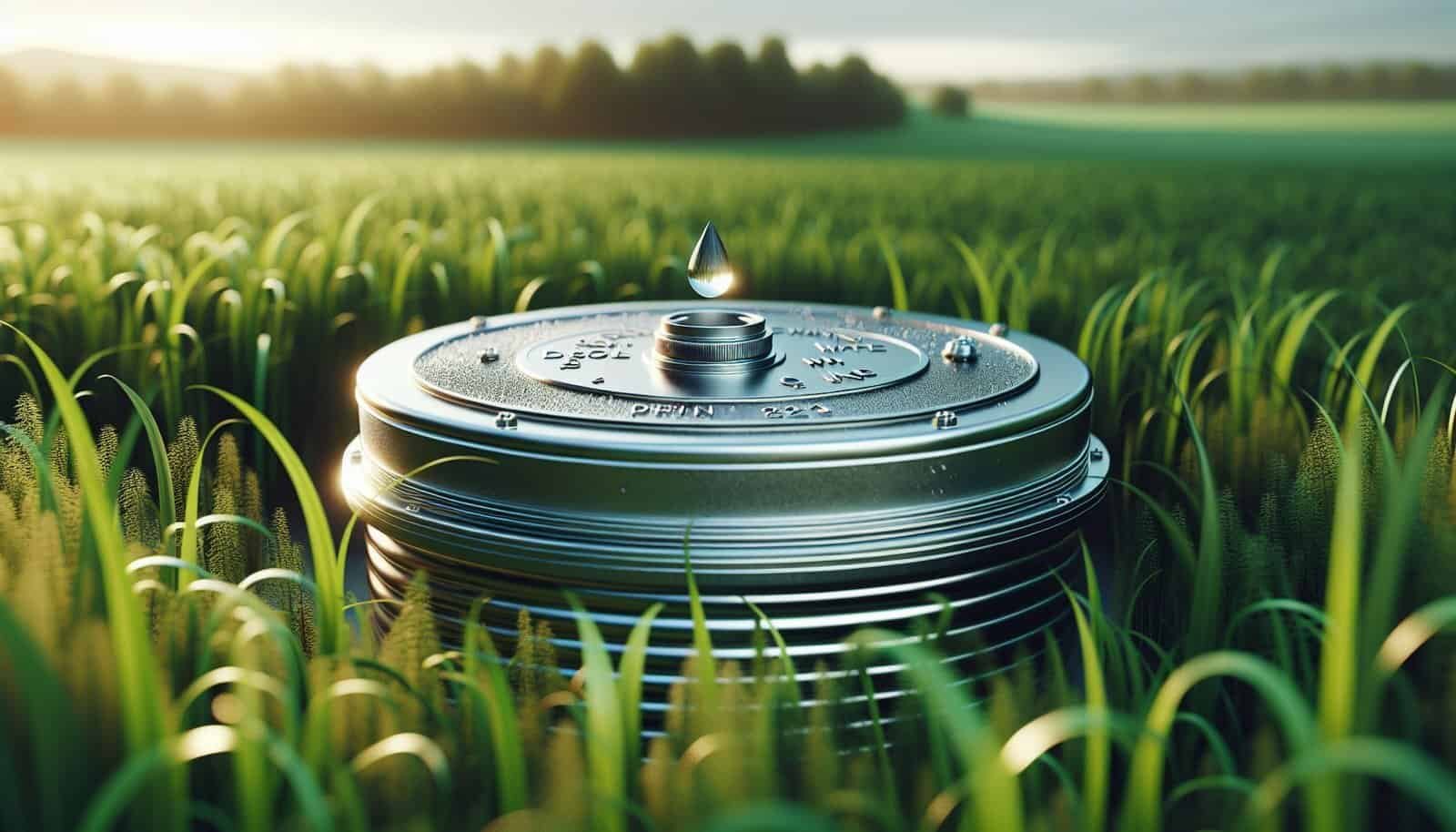Have you ever wondered what advantages come with owning a private water well?
What Are The Benefits Of Owning A Private Water Well?
Owning a private water well can change the way you manage water for your home, garden, and livestock. This section outlines the core reasons people choose wells and what owning one actually means for your daily life.
Independence from Municipal Water
When you have a private well, you’re not dependent on a municipal water supply. That means no monthly water bill to the city, and you’re less affected by municipal water outages or rate increases. You control your source, but you also take on responsibility for its upkeep.
Potential Long-Term Cost Savings
Although the upfront costs of drilling and installing a well can be high, you may save money over time through reduced monthly utility bills. For many owners, the well pays back its installation cost over years via eliminated or reduced water charges.
Better Control Over Water Quality
With a private well, you have direct knowledge of and control over the treatment and testing you perform. You can choose filtration, softening, or disinfection systems that match the specific water chemistry from your aquifer, rather than relying on a one-size-fits-all municipal treatment.
Increased Property Value and Market Appeal
Homes with a properly functioning private well often appeal to buyers who value self-sufficiency or rural living. A well-maintained well can add to your property’s value, especially when water access is limited in the area.
Reliable Water Supply for Rural or Off-Grid Living
If you live in a rural area or off-grid, a private well is often the most reliable and feasible water source. You won’t have to rely on pipeline delivery or trucked water, and you can maintain your lifestyle with a consistent water source.
Agricultural and Irrigation Benefits
For gardening, orchards, or small livestock operations, a private well provides the volume and flexibility you need. It gives you freedom to irrigate when you want and helps reduce dependence on municipal irrigation schedules or water restrictions.
Environmental Considerations
Using groundwater responsibly can be more sustainable in some contexts, particularly if you implement efficient practices like drip irrigation and leak-free plumbing. You can also avoid the environmental footprint of centralized water treatment and long-distance distribution—provided you manage recharge and usage carefully.
Understanding the Basics: How a Private Well Works
It helps to understand the main components of a well so you know what you’re buying, maintaining, and eventually replacing. Here’s a straightforward breakdown of how your system works.
Key Components of a Typical Private Well System
You’ll find a few primary parts in most private well systems: the well casing and screen, the pump (submersible or jet), the pressure tank, pressure switch or control box, and plumbing to the house. Each has a specific role in moving and storing water.
- Well casing and screen: Keeps the well open and filters large particles.
- Pump: Moves water from the aquifer to your home.
- Pressure tank: Stores pressurized water to reduce pump cycling.
- Pressure switch/control box: Turns the pump on and off based on tank pressure.
- Plumbing and fixtures: Deliver water to taps and appliances.
Types of Wells and Pumps
Different well types and pumps suit different locations and purposes. Common well types include drilled, driven, and dug wells. Pumps are usually either submersible (for deeper wells) or jet/above-ground pumps (for shallow wells).
- Drilled wells: Deep, reliable, and common for residential use.
- Dug wells: Shallow, historically used, less common today.
- Submersible pumps: Efficient for deeper wells and quieter since they’re underwater.
- Jet pumps: Easier to service but best for shallow wells or with a well pit.

Health and Water Quality Considerations
Water quality is a major reason to test and treat well water regularly. You’re in charge of ensuring your water is safe for drinking and household use.
Water Testing: What You Should Test For
You should test for bacteria (total coliform and E. coli), nitrates, pH, hardness, iron, manganese, and any local contaminants such as arsenic or radon if they’re known issues in your region. Seasonal testing and after unusual events (flooding, drilling nearby) are good practices.
- Annual tests: Bacteria and nitrates.
- Periodic tests: Metals (iron, manganese), hardness, pH.
- Situational tests: Arsenic, radon, VOCs, pesticides depending on local land use.
Treatment Options Based on Results
You can install specific treatment systems based on test outcomes: chlorination or UV for bacteria, ion exchange or reverse osmosis for nitrates, water softeners for hardness, and activated carbon for VOCs and organics. Combination systems are common if several issues appear.
Signs Your Water Needs Attention
If your water tastes metallic, smells like rotten eggs, appears cloudy, or stains fixtures, those are signs you should test and treat your water. Changes in taste or odor after heavy rains are often a red flag for surface contamination.
Financial Considerations: Costs, Savings, and Funding
Owning a well shifts some costs from utilities to you. Understanding installation costs, ongoing expenses, and potential reimbursements or grants helps you budget.
Upfront and Ongoing Costs
Initial costs include drilling, pump installation, pressure tanks, and plumbing. Ongoing costs include testing, treatment, electricity for the pump, maintenance, and occasional repairs.
- Upfront costs (ballpark): $5,000–$15,000 or more depending on depth and geology.
- Annual operating costs: $200–$800 (electricity, testing, routine maintenance).
- Repair/replacement costs: Highly variable, depending on the component.
What’s the Cost of Replacing a Well Pump in 2025?
Replacing a well pump in 2025 typically ranges from about $800 to $4,500 depending on the pump type, well depth, accessibility, and additional parts or labor. Here’s a more detailed breakdown to help you estimate:
| Component / Situation | Typical 2025 Cost Range (USD) | Notes |
|---|---|---|
| Shallow jet pump replacement | $400 – $1,200 | For pumps in pits or above-ground shallow wells; simpler to access. |
| Submersible pump (shallow depth) | $800 – $1,800 | Includes common residential depths (e.g., <100 ft).< />d> |
| Submersible pump (deep wells) | $1,500 – $4,500+ | Costs rise with depth and complexity; deep installations require winches, longer pipe, and more labor. |
| Control box/pressure switch replacement | $150 – $600 | Often replaced when pump is replaced or if electrical control fails. |
| Pressure tank replacement | $400 – $1,200 | Can be replaced independently; size affects cost. |
| Labor and rigging | $300 – $2,000+ | Access, well cap removal, and time affect price—remote locations cost more. |
| Total replacement with parts & labor (average) | $1,000 – $3,500 | Typical residential replacement; edge cases higher. |
Factors that influence the final cost:
- Well depth and pump horsepower needed.
- Accessibility of the wellhead (space, location).
- Need to replace other components (pressure tank, wiring).
- Local labor rates and contractor availability.
- Permitting or inspection fees in your locality.
You should request multiple quotes and confirm what’s included (diagnostics, parts, labor, clean-up, warranty).
Ways to Reduce Long-Term Costs
You can prolong pump life and reduce long-term spending with regular inspections, proper pressure tank maintenance, avoiding dry running, and monitoring water quality. Energy-efficient pumps and smart controls can lower electricity costs over the pump’s life.
Funding, Grants, and Loans
Some rural development programs, state agencies, or environmental grants help offset costs for low-income households, agricultural needs, or remediation projects. Check local and federal programs (USDA Rural Development in the U.S., for example) for possible assistance.

Maintenance: What You’ll Need to Do
Regular maintenance ensures reliability and extends the life of your well system. It also helps avoid unexpected failures.
Routine Maintenance Tasks
You’ll want to test water annually, inspect the well cap and casing for damage, check the pressure tank and pressure switch, and monitor pump cycling. Keep records of service and test results.
- Annual: Water testing, visual inspection, pressure tank check.
- Every few years: Pressure tank diaphragm checks, inspection of electrical components.
- As needed: Cleaning or replacing filters, servicing treatment systems.
Signs of Pump or Well Problems
Watch for reduced water pressure, sputtering taps, changes in water clarity or odor, frequent pump cycling, air in the pipes, or unusual noises from the pump. These signs suggest a technician should evaluate the system.
When You Can Do It Yourself vs. When to Call a Pro
You can handle basic tasks like filter changes, monitoring pressure, and basic visual inspections. Call a licensed well contractor or plumber for electrical issues, pump removal, deep-well troubleshooting, and any situation involving contamination or structural damage.
Choosing a Well Contractor and Managing Service
Selecting the right contractor and managing service ensures quality work and helps you avoid future headaches.
How to Find a Qualified Contractor
Look for licensed and insured contractors with good references, local experience, and clear warranties. Ask for references and recent job examples, and confirm licensing and insurance. Prefer contractors familiar with local geology and permitting.
Questions to Ask Before Hiring
Ask about experience in well drilling and pump services, response times for emergencies, warranties on labor and parts, and whether they handle permits and inspections. Request a written estimate and scope of work.
Permitting and Local Regulations
Many jurisdictions require permits for drilling or major repairs, and there may be regulations about setbacks from septic systems and property lines. Confirm local rules before any work begins.

Environmental and Legal Responsibilities
Owning a well comes with responsibilities to protect groundwater and follow regulations.
Protecting Groundwater Quality
Prevent contamination by maintaining septic systems, keeping hazardous materials away from the wellhead, and ensuring proper drainage. Avoid using fertilizers or pesticides near the well.
Setbacks and Property Use Rules
You may be required to maintain certain distances between wells and potential contamination sources—septic systems, livestock yards, chemical storage, or fuel tanks. Check local codes to stay compliant.
Water Rights and Usage Limits
In some regions, groundwater belongs to the owner; in others, it’s a regulated resource with usage limits or reporting requirements. Learn local laws about pumping permits, withdrawal limits, and reporting.
Troubleshooting Common Well Problems
Knowing common problems and their likely causes helps you decide whether you can fix something or need professional help.
Low Water Pressure or Flow
Possible causes:
- Partially clogged screen or pump intake.
- Pump deterioration or damage.
- Low well yield due to seasonal variations or drought.
- Pressure tank loss of air charge.
What you can try:
- Check pressure gauge and listen for pump cycling.
- Inspect and change filters.
- Call a pro for pump diagnostics if simple fixes don’t work.
Strange Noises or Frequent Cycling
A pump that cycles frequently may have a failing pressure tank or a small leak in the system. Noises can indicate air in the lines, pump cavitation, or motor issues. Replace or re-pressurize the tank and get a technician to inspect the pump.
Water That Smells or Looks Bad
- Rotten egg smell: typically hydrogen sulfide; often treatable with aeration and oxidizing filters.
- Metallic taste or rusty water: often iron or manganese; usually treated with filtration.
- Cloudy or brown water: suspended particulates or sediment; check for well disturbance or screen issues.

Treatment Options and System Upgrades
You can tailor water treatment to your needs. Upgrades improve quality, conserve energy, and add convenience.
Common Treatment Systems
- UV disinfection: kills bacteria and viruses without chemicals.
- Chlorination: effective for disinfection, sometimes used for shock treatment.
- Reverse osmosis: high-quality filtration for drinking water.
- Water softeners: remove hardness minerals to protect pipes and appliances.
- Iron/manganese filters: prevent staining and taste issues.
- Whole-house filtration: addresses sediment and particles before appliances.
Energy-Efficient Pumps and Smart Controls
Consider variable-speed pumps or energy-efficient motors to reduce electricity usage. Smart controllers can schedule pump operation, monitor run times, and alert you to changes that indicate a problem.
System Upgrades That Add Value
Replacing a worn pressure tank, upgrading to a stainless-steel submersible pump, or adding a whole-house filtration system can increase appliance longevity and property value.
Safety and Emergency Preparedness
Your well should be part of your household emergency plan. You’ll want to know how to respond to contamination, pump failure, or natural disasters.
Emergency Water Supplies
Keep stored water for emergencies and have a plan for alternative supply if your well fails. Portable water containers, connections to a backup water source, or agreements with nearby neighbors can be helpful.
Post-Disaster Actions
After flooding or seismic events, test your water before use. Sanitize the system if necessary, and rely on professionals for major repairs. Avoid using contaminated water for consumption until cleared.

Resale, Insurance, and Documentation
Keeping good records and maintenance documentation helps when you sell your home and when filing insurance claims.
Documentation to Keep
Maintain records of test results, service receipts, pump model and serial numbers, and any warranties. This documentation reassures buyers and helps service providers diagnose problems.
Insurance Considerations
Homeowners insurance policies vary in coverage for wells and related damage. Review your policy and consider separate coverage for the well or pump if needed.
Selling a Home with a Private Well
Be prepared to provide recent water test results, well logs, and maintenance history. Many buyers will request inspection and testing during escrow.
Pros and Cons Summary
It helps to look at pros and cons side by side so you can weigh your decision clearly.
| Pros | Cons |
|---|---|
| Independence from municipal water; no monthly water bills | Upfront installation cost can be high |
| Control over water quality and treatment | You’re responsible for maintenance and testing |
| Reliable supply for rural and off-grid living | Repairs and replacements (pump/tank) can be costly |
| Potential property value increase | Regulatory and environmental responsibilities |
| Suitable for irrigation and agricultural use | Water supply can vary seasonally or during droughts |
Final Checklist: Are You Ready to Own a Private Well?
Use this checklist to assess whether owning a well fits your needs.
- Do you live in an area where municipal water is unavailable or costly?
- Are you ready to budget for initial drilling and ongoing maintenance?
- Will you commit to annual water testing and timely repairs?
- Can you find a reliable local contractor with good references?
- Are you prepared to follow local regulations and protect groundwater?
If you can answer yes to these, a private well can be a practical and rewarding choice.
Closing Thoughts
Owning a private water well gives you independence and control, but it also places responsibility for water quality, maintenance, and environmental protection squarely on your shoulders. With regular testing, smart system choices, and responsible usage, you can enjoy reliable water for drinking, household use, and irrigation while managing costs over the long term. If you’re considering a pump replacement in 2025, use the cost ranges provided as a guide and get multiple professional estimates to fit your specific situation.
